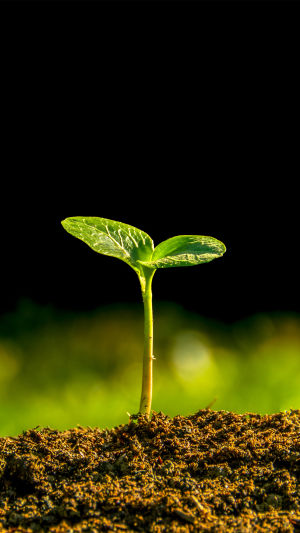The pace of human beings returning to the moon is getting closer and closer, and manned moon landings are also attracting attention.
In addition to the key technologies required for a manned landing on the moon, the health and safety of astronauts remain the top priority.
How do astronauts live on the moon? How to have a constant source of fresh food? This will be a question that space agencies of various countries and international organizations will jointly explore.
How hard is it to have a space garden?
Sci-fi fans may remember the ordeal of Mark Watney, the main character in Andy Weir's novel, "The Martian", who tried to grow potatoes when he was stranded alone on Mars. And if humans are to have a durable basis for existence beyond Earth, then growing plants in space is absolutely necessary.
Previously, astronauts have successfully eaten space radishes, peppers, and lettuce grown on the International Space Station, but there are still many challenges in creating a vibrant space garden.
The space environment is rich in carbon dioxide, lacks soil microbes, has altered gravity, is exposed to intense radiation, and has highly saline liquid water. In order for plants to thrive in space and provide humans with well-rounded and balanced nutrition, they need to be redesigned.
Renewable fresh food sources are a great way to improve astronaut health compared to freeze-dried and prepared foods. They provide essential vitamins and minerals, and add variety and flavor to meals, protecting astronauts from "food fatigue," malnutrition, and weight loss.
Currently, space plants are grown in enclosed artificial environments with low-energy LED lights and porous clay "soil" that supplies water, nutrients, and oxygen to the roots. High-tech sensors and cameras monitor the health of the plants.
However, plants have not yet evolved the ability to grow in this environment and are not ready for changes in light, temperature, etc., which limits the plant's full growth potential.
As a result, scientists will tweak plant genetics to produce faster-growing "pickable and edible" food crops. Such as tomatoes, carrots, spinach, and strawberries, allowing them to grow to their fullest potential in a closed, controlled environment.
Australia: Grow plants on the moon by 2025
Australia will grow plants on the moon as early as 2025. The Australian Lunar Horticultural Development Experiment (ALEPH-1) aims to investigate whether plants can not only tolerate the harsh lunar surface but thrive.
The types of plants sent to the Moon will be carefully selected based on how quickly they can germinate and their tolerance to the extreme temperature swings experienced in space.
One of the plants the researchers are considering is an Australian native 'resurrection grass' that can tolerate harsh conditions, surviving in a dormant state for months without any water.
The plant seeds and "resurrection grass" will be transported to a specially designed capsule on the Genesis 2 spacecraft. The chamber will contain sensors, cameras, and water.
Plant growth and general health will be monitored for 72 hours after landing on the lunar surface, and data and images will be transmitted back to Earth.
Japan: Companies prepare for the lunar market
Some Japanese venture capital firms are also preparing for the potential market for manned moon landings.
Tokyo-based Japanese space business consulting company DigitalBlast has developed a device that artificially generates gravity for plants.
The device, called "Amaz", is 20 centimeters in diameter, 40 centimeters wide, and weighs 5 kilograms, and it can generate the same gravity in space as on Earth or the moon.
Astronauts can place plants in three capsules, which the machine spins to generate gravity. Astronauts can change the rotation speed of each capsule, more than 100 revolutions per minute will produce the same gravity as the earth, less than 50 revolutions will be equivalent to the gravity of the moon, and no rotation will have zero gravity.





